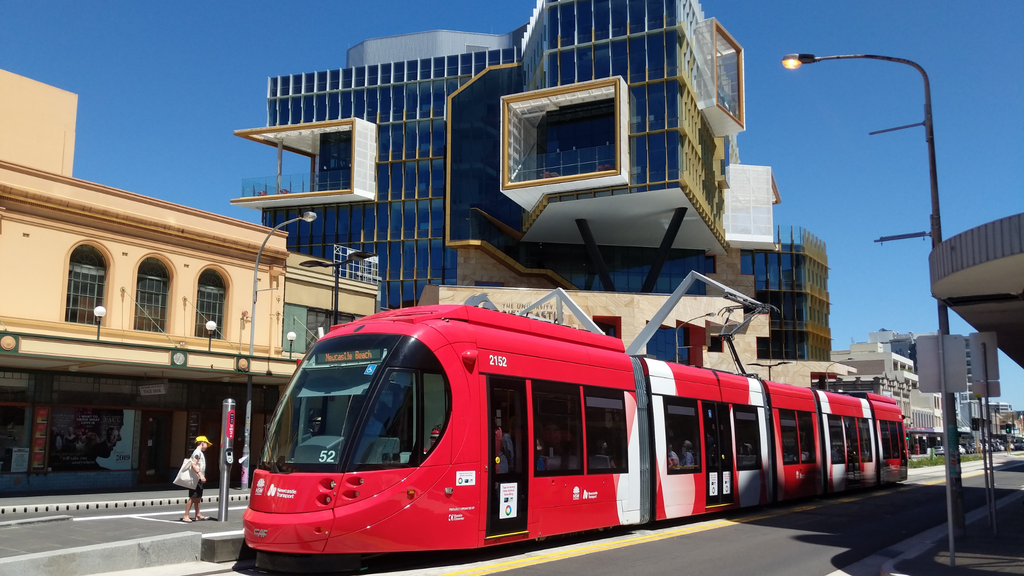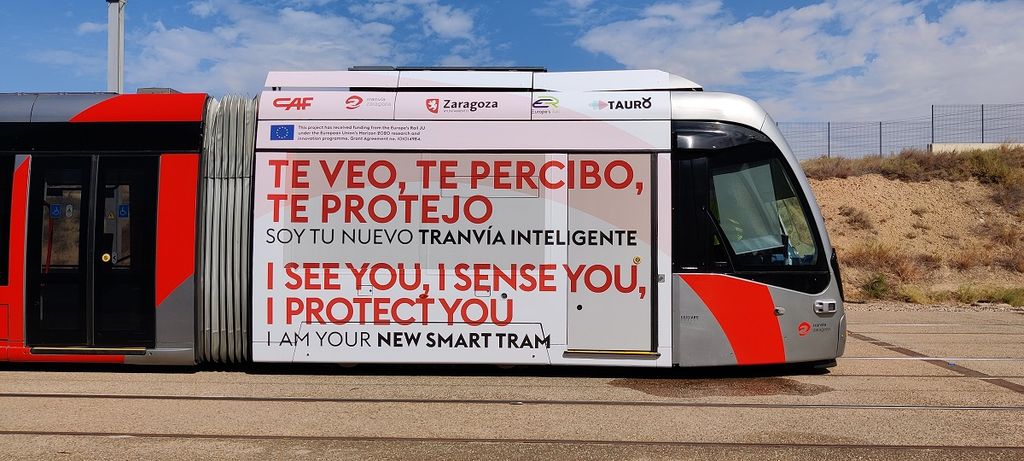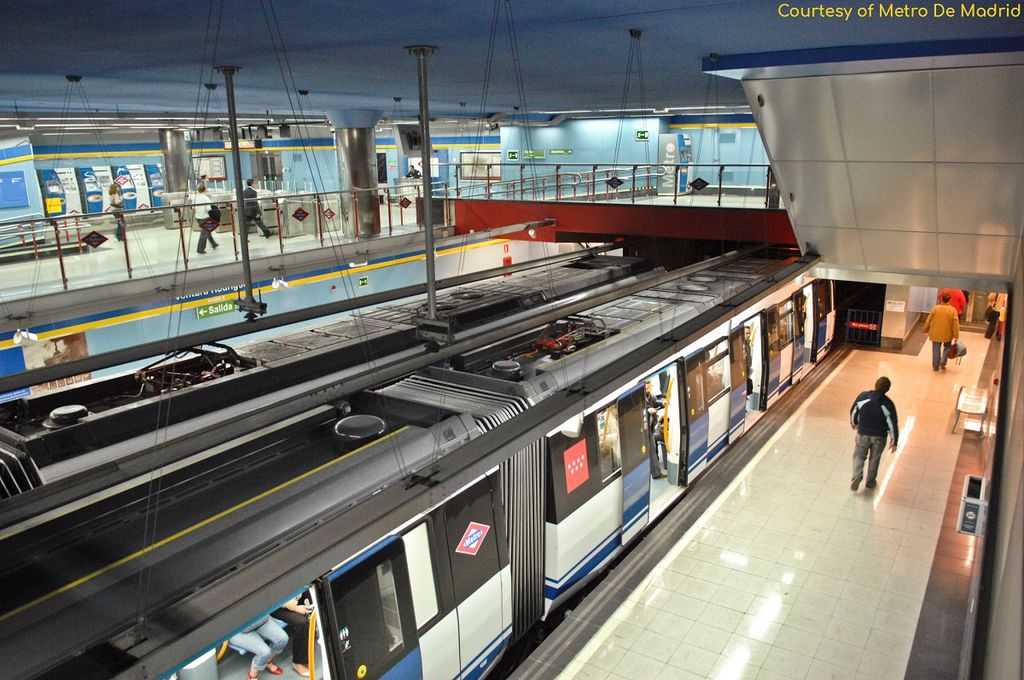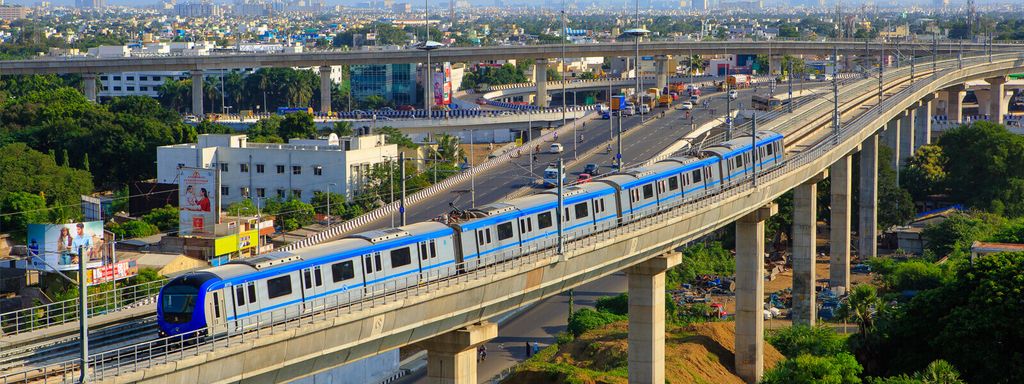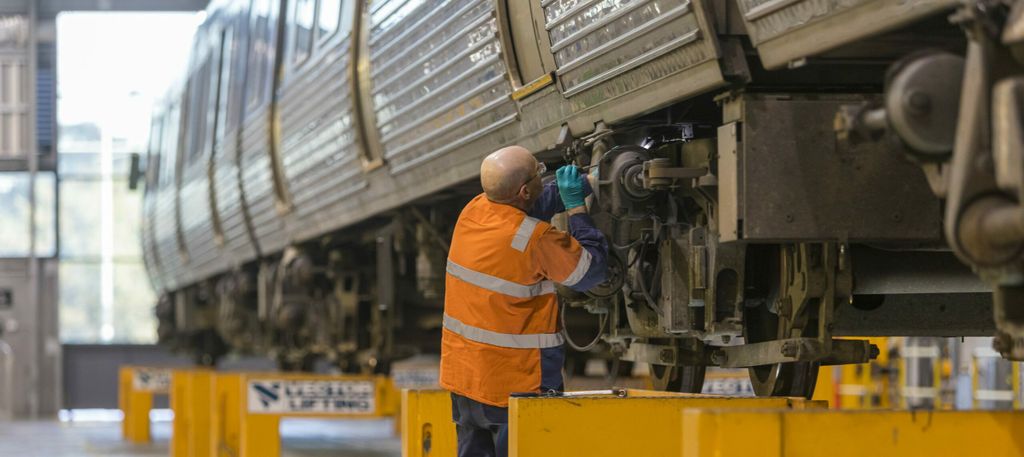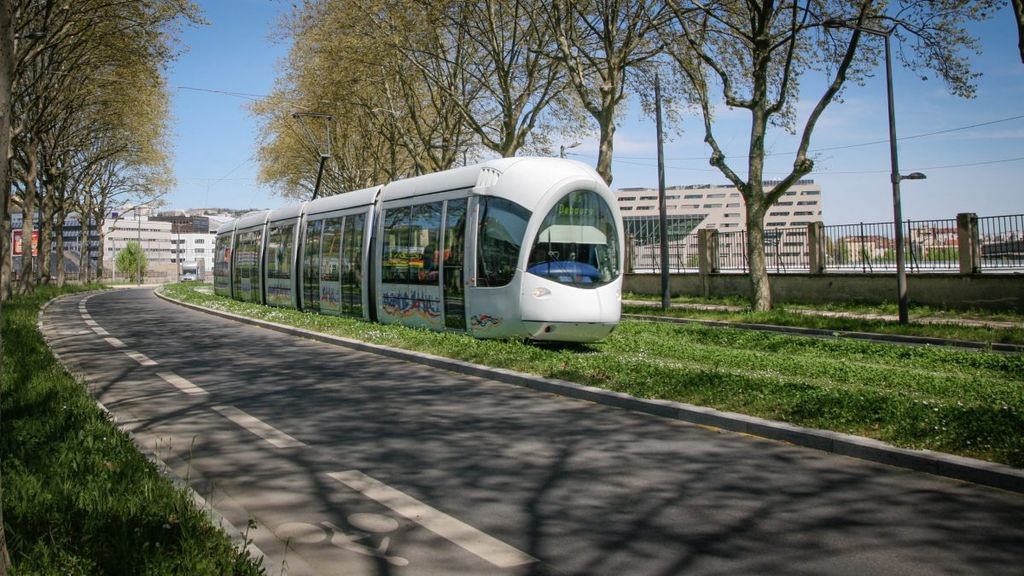
Light rail transit: Data shows reliable, attractive mode is advancing worldwide
The global tram and light rail landscape
Did you know that Melbourne, Australia, has the longest Light Rail Transit (LRT) network in the world? Or that Europe has opened a whopping 624km of lines since 2016? How about the rise of low-floored vehicles, better serving users with access needs, has risen to 45% globally?
LRT is still in a so-called ‘renaissance period’, once which started around 30 years ago, and we are currently seeing an average of 6.7 new systems opening each year. LRT is a transport system based on electrically powered light rail vehicles (LRV) that operates on a track in a dedicated right-of-way (meaning separated lanes). They are designed to deliver rapid, reliable, and safe services. LRT systems can have different purposes depending on the context: they provide the backbone of the public transport system in small and medium-sized towns, or act as additional lines in support of the metro system in larger cities.
The global tram and light rail landscape is a regular extensive data collection exercise at UITP, covering infrastructural aspects of LRT at city level and aggregated by region. The latest version looks at 2019-21 showing the changes over the last three years and how COVID-19 has impacted this mode of public transport.
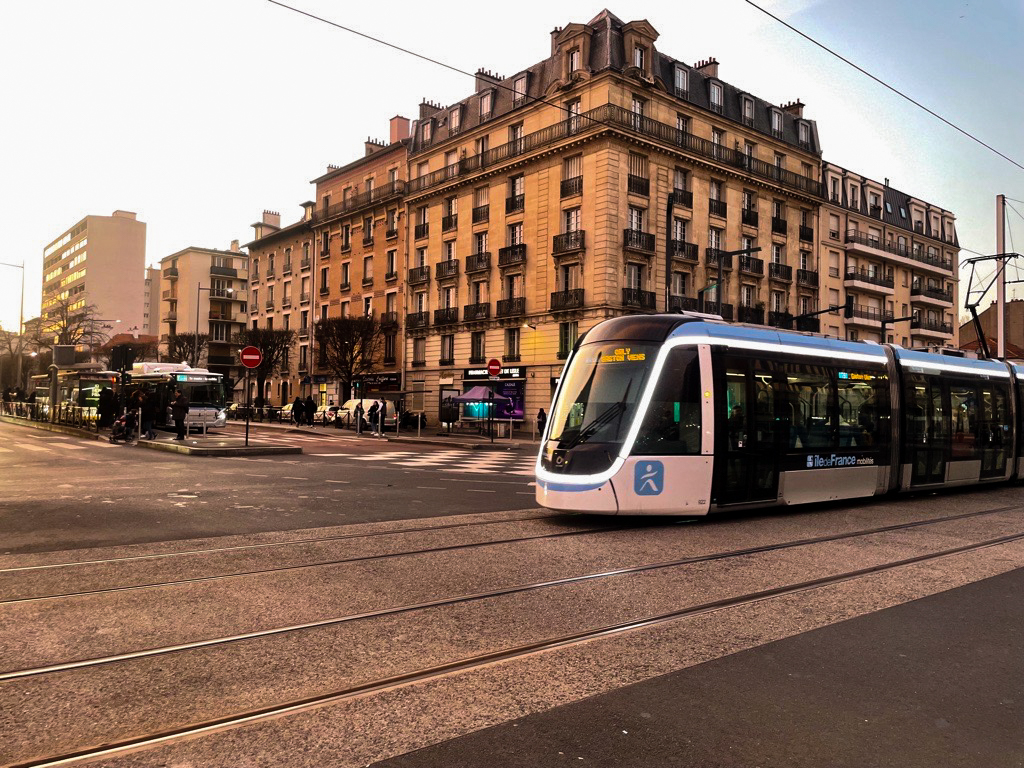
More and more LRT lines!
As of 2021, there were 15,824km of LRT network in op¬eration, mainly distributed between Europe (58%) and Eurasia (22%). At a global level, the length of infrastruc¬ture has been increasing by 1% per year on average since 2015.
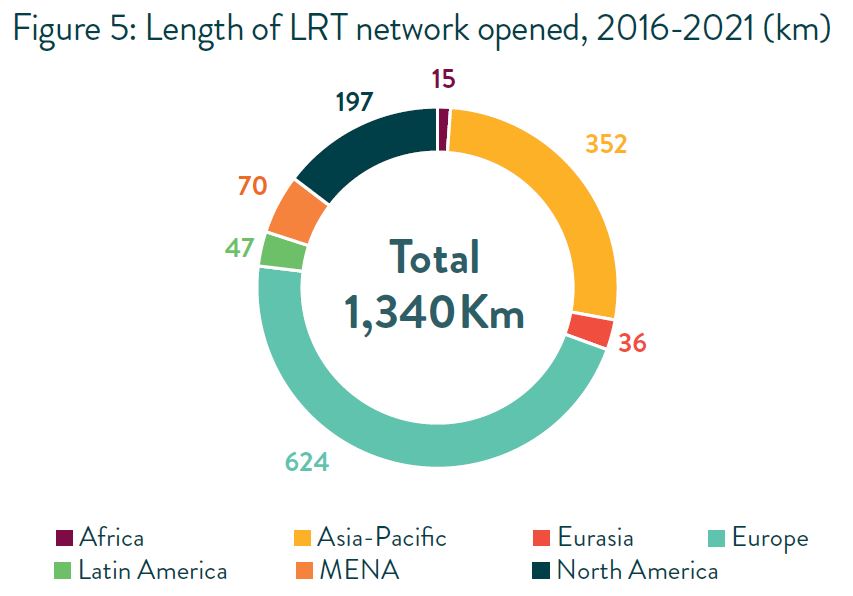
Ridership is recovering since COVID-19
In 2019, the volume of ridership was around 14.8 billion trips and, globally, this decreased by 37% on average in the following year. The regions most affected were MENA and North America, where the decline in ridership exceeded 50%.
Africa and MENA were the two re¬gions with the highest positive ridership variation between 2020 and 2021. They are the only two cases which had recovered at least 80% of their ridership in 2021 com¬pared with 2019. In contrast, North America is the only region where 2021 ridership was even lower than in 2020, and only reached 42% of pre-COVID-19 levels.
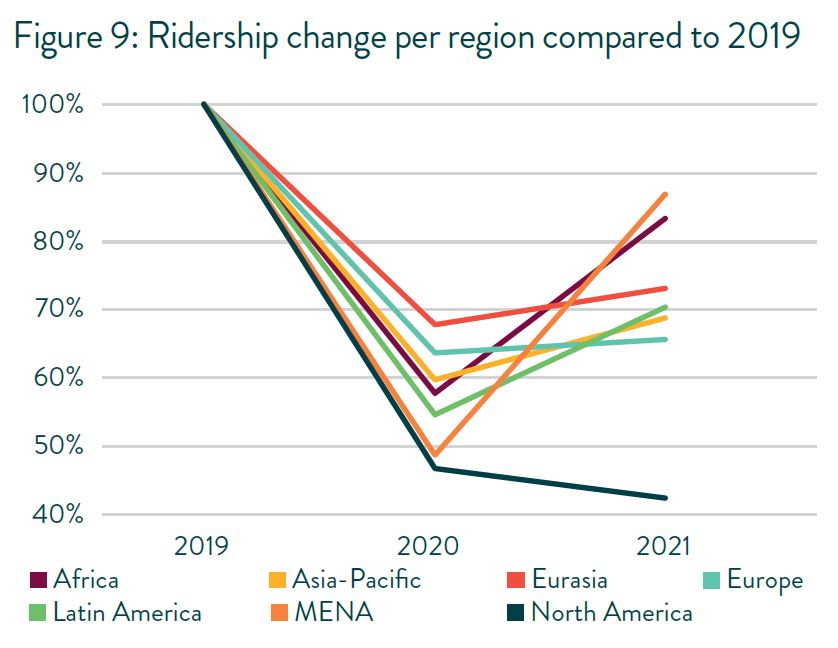
Fleet innovations have not stopped
The global number of LRT vehicles has remained stable in recent years at around 37,000. However, the fleet renovation process has not stopped, with the replacement of old vehicles with new cars offering better accessibility. The share of low-entry vehicles increased from 32% in 2015 to 45% in 2021.
Regions such as Africa, MENA and Latin America, which are opening new LRT systems, tend to adopt low-entry vehicles from the outset, resulting in the highest variation between 2015- 2019.
In terms of fleet size, Eurasia is the region with the most vehicles per million inhabitants, while Europe is the region with the most low-entry vehicles per capita of cities with LRT systems.
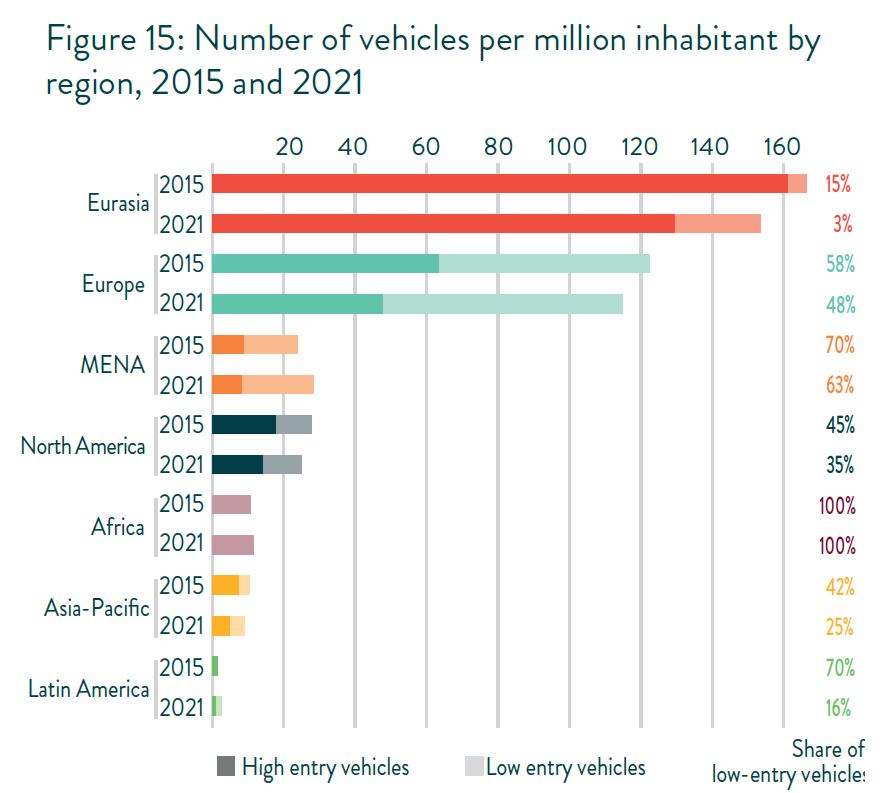
Light rail transit can serve as a backbone for cities or a feeder service to heavier rail systems. What also makes this mode attractive from the passenger point of view is reliability, comfort and ease of use. And, for those in the city, it brings a whole range of urban upgrades which often accompanies a line’s construction; from adding green spaces to better road space design and improving air quality.


